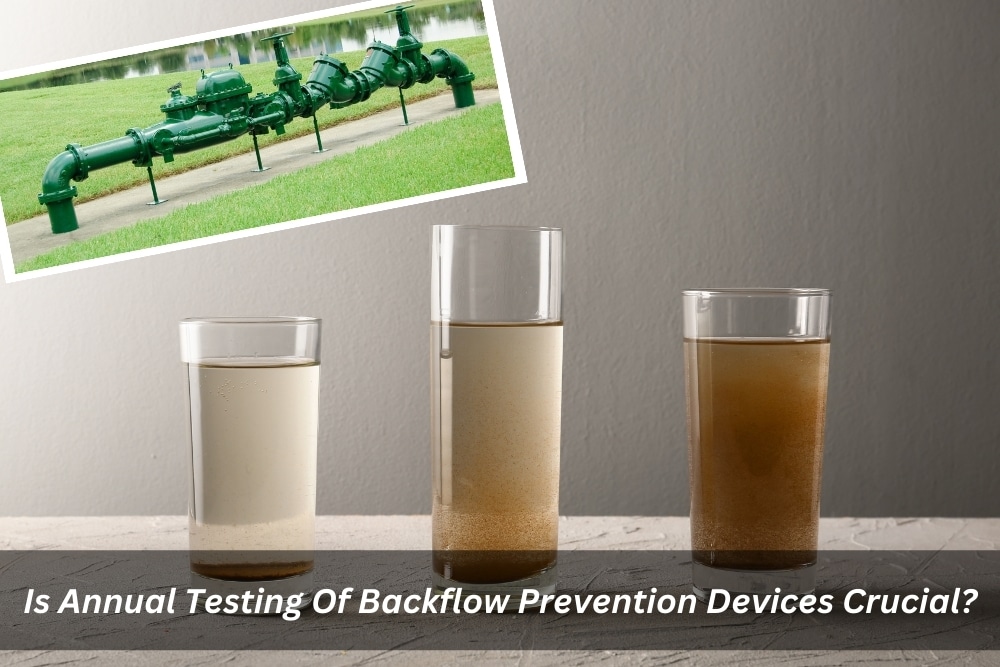Australia, with its unique blend of urban landscapes and vast natural beauty, faces its share of challenges when it comes to water management. In this context, the importance of maintaining backflow prevention devices cannot be overstated. In this article, we delve into the world of backflow prevention, exploring what these devices are, why they are essential, and the crucial role that annual testing plays in ensuring their effectiveness.
What are backflow prevention devices?
Before we dive into the importance of annual testing, let’s understand what backflow prevention devices are. These devices are designed to safeguard our water supply by preventing the reverse flow of water from a property back into the main water system. Essentially, they act as barriers, ensuring that water flows in one direction only – the intended direction.
What is backflow and why is it dangerous?
Backflow takes place when the regular flow of water is reversed, creating the potential for contaminants to enter the public water supply. This contamination can arise from various sources, including irrigation systems, industrial processes, or even the use of certain chemicals at residential properties. The dangers lie in the potential contamination of the drinking water supply, posing serious health risks to the community.
Is it crucial to test backflow prevention devices annually?
The answer is a resounding yes. Annual testing is a linchpin in ensuring that these devices function optimally, providing reliable protection against backflow.
How can annual testing ensure proper backflow prevention?
Annual testing is a critical aspect of maintaining backflow prevention devices. It involves a thorough examination of these devices to ensure they are in optimal working condition. Regular testing helps identify any faults or issues that may have developed over time, ensuring that the devices continue to provide reliable protection against backflow.
- Identification of faults: Annual testing allows for the early detection of any faults or malfunctions in devices. This proactive approach helps address issues before they escalate into potential threats.
- Ensuring compliance: Many local authorities and water authorities require property owners to comply with regulations. Regular testing ensures that these devices meet the necessary standards and comply with regulatory requirements.
- Extending device lifespan: Like any mechanical system, these devices can experience wear and tear over time. Annual testing helps identify components that may need replacement, thereby extending the overall lifespan of the device.
What happens if you don’t test your backflow prevention devices annually?
Neglecting annual testing of backflow prevention devices can have serious consequences. Without regular checks, these devices may become inefficient or fail altogether, leaving the water supply vulnerable to contamination. The potential risks associated with not testing annually include:
- Contamination of drinking water: The primary concern is the contamination of the public water supply. Without effective backflow prevention, hazardous substances can enter the water system, posing health risks to consumers.
- Legal consequences: Failure to comply with regulatory requirements can lead to legal consequences. Property owners may face fines or other penalties for neglecting their responsibility to ensure the proper functioning of these devices.
- Health and safety risks: Contaminated water poses significant health and safety risks to individuals who consume or come into contact with it. These risks can range from mild illnesses to severe health conditions, depending on the nature of the contaminants.
How often should you test your backflow prevention devices?
The frequency of testing is a crucial consideration. While annual testing is a common practice, specific factors may influence the testing schedule. These factors include the type of backflow prevention device, local regulations, and the level of risk associated with the property. Consulting with a qualified professional can help determine the appropriate testing frequency for your specific situation.
- High-risk environments: Properties with a higher risk of contamination, such as those involved in industrial processes or chemical handling, may require more frequent testing. In such cases, semi-annual or quarterly testing might be necessary.
- Type of device: Different types of devices may have varying testing requirements. It’s essential to follow the manufacturer’s recommendations and consult with experts to establish a suitable testing schedule.
- Local regulations: Local water authorities often stipulate testing frequencies based on regional considerations. Property owners should be aware of and adhere to these regulations to ensure compliance.
Who should perform annual backflow prevention device testing?
Testing backflow prevention devices is a specialised task best handled by qualified professionals. Licenced plumbers or backflow prevention specialists possess the knowledge and expertise to conduct thorough examinations, and they can provide assistance and address any issues that may arise during testing. Engaging certified professionals ensures that the testing process aligns with industry standards and regulatory requirements, offering comprehensive services for your peace of mind.
What are the benefits of having your backflow prevention devices tested annually?
Investing in annual testing yields a range of benefits, safeguarding both public health and the integrity of the water supply. Let’s explore these advantages:
Enumerate:
- Public health protection: Annual testing ensures that these devices effectively safeguard the public water supply from contaminants, contributing to the overall health and well-being of the community.
- Regulatory compliance: Regular testing helps property owners comply with local regulations and standards, avoiding potential legal consequences. This proactive approach demonstrates a commitment to responsible water management.
- Early issue detection: Annual testing allows for the early detection and resolution of any faults or malfunctions in the backflow prevention devices. This prevents potential system failures and extends the lifespan of the devices.
- Peace of mind: Property owners can take steps to reduce the risk of water supply contamination by ensuring their backflow prevention devices are installed correctly, maintained regularly, and tested according to local regulations. This helps maintain an effective air gap or other backflow prevention mechanism, ultimately protecting public health.
Conclusion
In the intricate dance of water management, the significance of backflow prevention devices cannot be underestimated. Annual testing emerges as the linchpin in ensuring these devices fulfil their crucial role. By identifying and addressing issues promptly, complying with regulations, and prioritizing public health, property owners play a pivotal role in maintaining the integrity of Australia’s water supply. In the realm of water management, annual testing isn’t just a task – it’s a commitment to a safer and healthier future.
Ready to Safeguard Your Water Supply? Choose Apex Plumbing Solutions!
After delving into the essential world of backflow prevention devices, it’s clear that ensuring the integrity of your water supply is non-negotiable. At Apex Plumbing Solutions, we understand the paramount importance of annual testing in this process.
Don’t wait until issues arise; take a proactive step towards water management excellence. Contact Apex Plumbing Solutions now to schedule your annual backflow prevention device testing. Let’s work together to guarantee the safety, compliance, and longevity of your water supply infrastructure. Your commitment to annual testing is an investment in a safer, healthier future – and Apex Plumbing Solutions is here to ensure it pays dividends. Call us today and experience water management with expertise!


